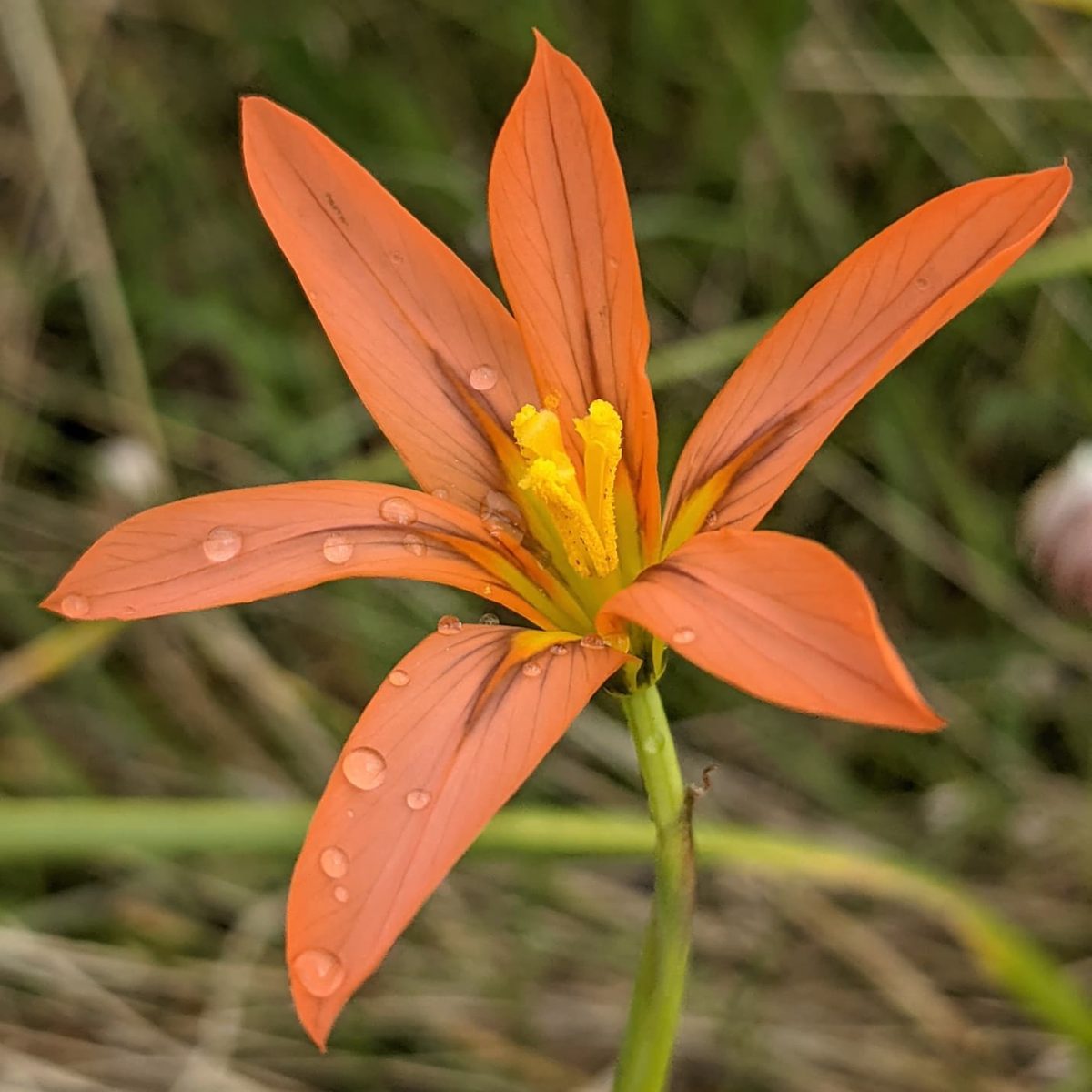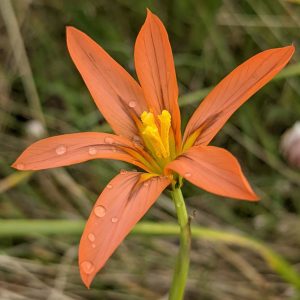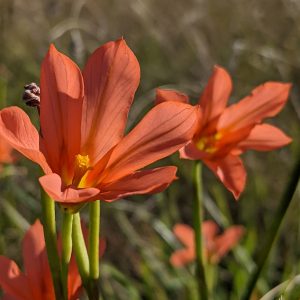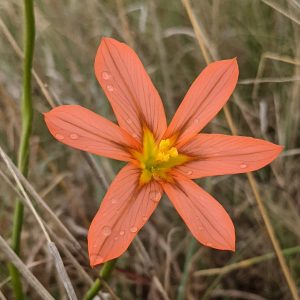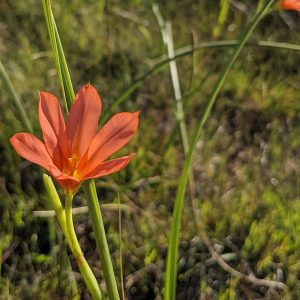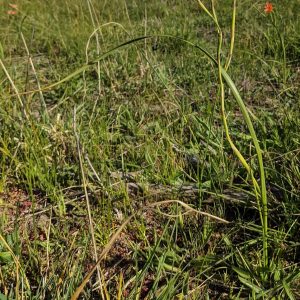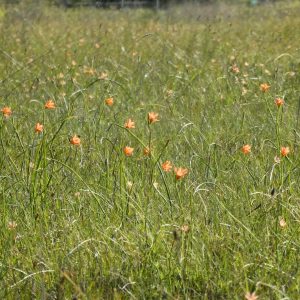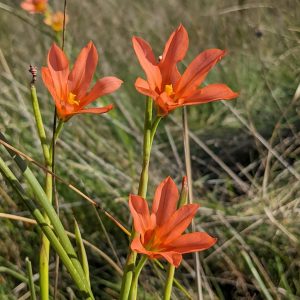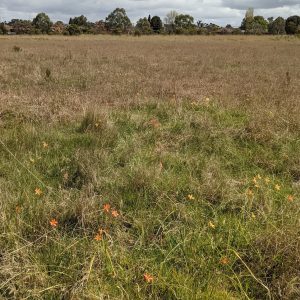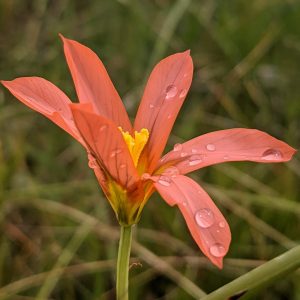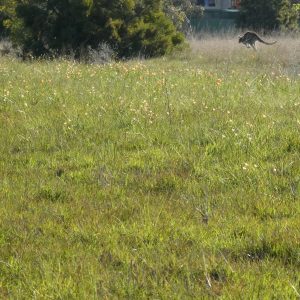One-leaf Cape Tulip (Moraea flaccida), another South African bulb more extensive in Australia than its home province.
Just when One-leaf Tulip joined the two-leafed Moraea miniata in Australia is made difficult by imprecision. While plants that poisoned stock at Ascot Vale in the 1890s were conclusively ID’d as two-leaf tulip, many later reports from around the country may describe either species.
The first identified collections of M. flaccida were in SA, recorded in 1905 on the Fleurieu Peninsula and from 1908 in the Adelaide Hills, and the species included in Black’s 1909 Naturalised Flora of SA.
The Fleurieu record is contemporaneous with a tulip infestation at Yankalilla. Records of the outbreak begin with a resident’s letter to the Adelaide Register in 1901, describing the tulip ‘spreading about all the district and main roads’ and requesting funds for eradication. A 1913 account of a sheep poisoning north of Yankalilla applies a now familiar Australian traditional to Cape Tulip, wherein ‘many years ago this weed … was cultivated in the garden of an old colonist as a curiosity, and subsequently overran the farm. Strenuous efforts were made to eradicate the weed, but without success.’
While the Fleurieu’s productive land could be freed by heavy cultivation, One-leaf Tulip was spreading in the Adelaide Hills and marching east towards Victoria. Early records in this state were made in 1949 at Kaniva on the Western Hwy, and in 1952 between Horsham and Murtoa. A second incursion may have followed the Glenelg Hwy, with a 1966 roadside collection 5 miles east of the state line.
Over the 1970s-1980s, One-leaf Tulip was recorded around Victoria, either revealing earlier arrivals that had been glossed with two-leaf tulip or a new mechanically accelerated distribution.
At Central Creek Grasslands (pictured), neither the one-leaf nor two-leaf species were detected before the 2000s. Fire-adapted, both Cape Tulips are now accidental beneficiaries of ecological burns used to suppress woody weeds and exotic grasses in this Themeda triandra grassland.
View Original Post on Instagram
Search for information about Moraea flaccida in the Flora of Victoria
View information and occurrences of Moraea flaccida on the Atlas of Living Australia
